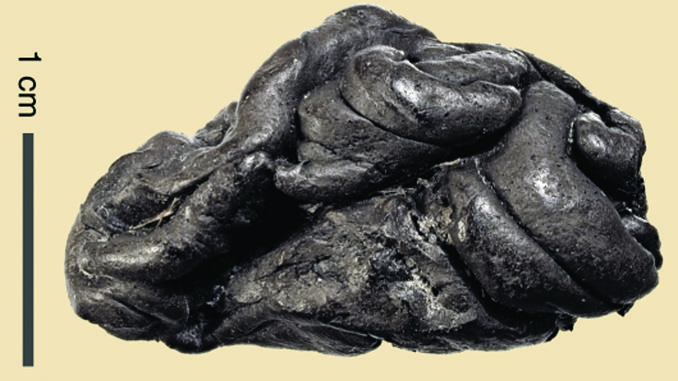
Bio Bites
By R. Gary Raham
A biologist-artist’s ruminations about our roles in a science-inspired world
Humans are master storytellers. As it turns out, science can now reveal stories we didn’t realize we were telling. Case in point: Archaeologists in southern Denmark recently found a wad of gum—actually, dark and resinous birch pitch, which served much the same purpose—discarded by a dark-haired blue-eyed girl 5,700 years ago after partaking of a meal of hazelnuts and wild duck. Wow. We leave behind us a trail of chemical barcodes that reveal much about how, and with whom, we lived our lives. (See the Nature article here: https://www.nature.com/articles/s41467-019-13549-9)
From the wad of discarded birch pitch scientists retrieved its owner’s complete genome and those of the microbes that called her mouth home—a portion of her microbiome: the bacteria, viruses, and fungi that make up much more than half of all of us. The gum-chewing girl’s DNA showed that she carried the genes for blue eyes, dark skin, and dark hair, demonstrating that fair skin, for example, may be a relatively recent addition to the Northern European suite of physical characteristics. And, although she lived during a time when farming was cutting edge technology in Northern Europe, she had most likely belonged to a hunter-gatherer tribe that lived in a duck-friendly marshland. Contemporaneous finds of fish traps and eel-catching prongs and spears supported that contention.
Some of the microbes that called her mouth home included the common Streptococcus pneumoniae that can cause pneumonia, and the Epstein-Barr virus—a kind of Herpes virus that can cause mononucleosis under the right conditions. Our young gum-chewer suffered from some of the same ailments with which we continue to struggle. She was also lactose intolerant, so couldn’t digest milk as an adult—another indicator that her people hadn’t domesticated cattle or were at least not dependent on milk products in their diet.
Anthropologists also know that chewing birch pitch was the habit of hunter-gatherers who used the sticky substance to help fasten stone tools to wooden hafts. Perhaps our blue-eyed girl helped out the local toolmaker or made various implements herself. Birch pitch also provides value as an antiseptic, so may have been used for that purpose.
An earlier chewed birch pitch discovery in the late 1980s in western Sweden revealed clear tooth impressions as well as DNA. Those finds were dated at 8,000 years before the present. Such discoveries can help track early migrations patterns of our not-so-distant forbears.
Many years ago in grade school none of us knew the treasure trove of information we were leaving behind under our desks. Some of that data may still exist in a landfill somewhere, just waiting for a future curious anthropologist to find.
Support Northern Colorado Journalism
Show your support for North Forty News by helping us produce more content. It's a kind and simple gesture that will help us continue to bring more content to you.
BONUS - Donors get a link in their receipt to sign up for our once-per-week instant text messaging alert. Get your e-copy of North Forty News the moment it is released!
Click to Donate